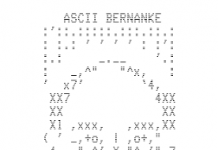As stated in our guide “What is Blockchain Technology?”, there are three principal technologies that combine to create a blockchain. None of them are new. Rather, it is their orchestration and application that is new.
These technologies are: 1) private key cryptography, 2) a distributed network with a shared ledger and 3) an incentive to service the network’s transactions, record-keeping and security.
The following is an explanation of how these technologies work together to secure digital relationships.
Cryptographic keys
Two people wish to transact over the internet.

Each of them holds a private key and a public key.

The main purpose of this component of blockchain technology is to create a secure digital identity reference. Identity is based on possession of a combination of private and public cryptographic keys.
The combination of these keys can be seen as a dexterous form of consent, creating an extremely useful digital signature.
In turn, this digital signature provides strong control of ownership.

Identity
But strong control of ownership is not enough to secure digital relationships. While authentication is solved, it must be combined with a means of approving transactions and permissions (authorisation).
For blockchains, this begins with a distributed network.
A Distributed Network
The benefit and need for a distributed network can be understood by the ‘if a tree falls in the forest’ thought experiment.
If a tree falls in a forest, with cameras to record its fall, we can be pretty certain that the tree fell. We have visual evidence, even if the particulars (why or how) may be unclear.
Much of the value of the bitcoin blockchain is that it is a large network where validators, like the cameras in the analogy, reach a consensus that they witnessed the same thing at the same time. Instead of cameras, they use mathematical verification.
In short, the size of the network is important to secure the network.
That is one of the bitcoin blockchain’s most attractive qualities — it is so large and has amassed so much computing power. At time of writing, bitcoin is secured by 3,500,000 TH/s, more than the 10,000 largest banks in the world combined. Ethereum, which is still more immature, is secured by about 12.5 TH/s, more than Google and it is only two years old and still basically in test mode.
System of record

When cryptographic keys are combined with this network, a super useful form of digital interactions emerges. The process begins with A taking their private key, making an announcement of some sort — in the case of bitcoin, that you are sending a sum of the cryptocurrency — and attach it to B’s public key.
Protocol

A block – containing a digital signature, timestamp and relevant information – is then broadcast to all nodes in the network.

Network servicing protocol
A realist might challenge the tree falling in the forest thought experiment with the following question: Why would there be a million computers with cameras waiting to record whether a tree fell? In other words, how do you attract computing power to service the network to make it secure?
For open, public blockchains, this involves mining. Mining is built off a unique approach to an ancient question of economics — the tragedy of the commons.
With blockchains, by offering your computer processing power to service the network, there is a reward available for one of the computers. A person’s self-interest is being used to help service the public need.
With bitcoin, the goal of the protocol is to eliminate the possibility that the same bitcoin is used in separate transactions at the same time, in such a way that this would be difficult to detect.
This is how bitcoin seeks to act as gold, as property. Bitcoins and their base units (satoshis) must be unique to be owned and have value. To achieve this, the nodes serving the network create and maintain a history of transactions for each bitcoin by working to solve proof-of-work mathematical problems.
They basically vote with their CPU power, expressing their agreement about new blocks or rejecting invalid blocks. When a majority of the miners arrive at the same solution, they add a new block to the chain. This block is timestamped, and can also contain data or messages.
Here’s a chain of blocks:

The type, amount and verification can be different for each blockchain. It is a matter of the blockchain’s protocol – or rules for what is and is not a valid transaction, or a valid creation of a new block. The process of verification can be tailored for each blockchain. Any needed rules and incentives can be created when enough nodes arrive at a consensus on how transactions ought to be verified.
It’s a taster’s choice situation, and people are only starting to experiment.
We are currently in a period of blockchain development where many such experiments are being run. The only conclusions drawn so far are that we are yet to fully understand the dexterity of blockchain protocols.
More on this point in our guides “What are Applications and Use Cases for Blockchain Technology?”and “What is the Difference Between Open and Permissioned Blockchains?”



















